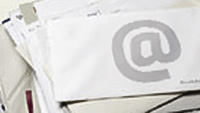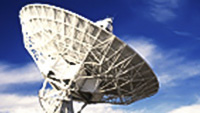Search and order online
NUNA - ESA Sponsered car wins World Solar Challenge
- Video Online only
- Title NUNA - ESA Sponsered car wins World Solar Challenge
- Released: 30/11/2001
- Length 00:08:35
- Language English
- Footage Type Documentary
- Copyright ESA
- Description
NUNA, the space age solar racing car from the Netherlands, built with help from ESA, won today the World Solar Challenge 2001 in record time! This 3010 km race right across Australia for cars powered by only solar energy, crossed the finish line today in the new world record winning time of 33 hours 9 minutes and 20 seconds, driven over 4 days. It was a very tight race for the Alpha Centauri Team from the TU Delft, which was advised by former astronaut Wubbo Ockels of ESA's Education Office, and supported by the ESA Technology Transfer Office. This programme outlines the design of the record breaking car that features several space technologies. It also includes highlights of this epic race. The programme comprises a 5 minute A-roll with English guide track (split audio; clean international sound) and is complemented by a B-roll with interviews. This video includes:
- 0:32-1:03 – Very nice video of NUNA driving in the race, in Australia
- 1:07-1:26 – Assembly of Nuna in The Netherlands and testing on tracks in The Netherlands
- 1:26-2:08 – Very nice videos with: Start of race in Darwin 18 November 2001; Passing the finishing line in Adelaide 21 November 2001, after 32 hours 39 minutes; Nuna’s average speed reached 91km/h on 4th day, with top speed above 100km/h.
- 2:08-2:15 – General objective of the World Solar Challenge race.
- 2:15-3:00 – Eight students were involved in handcrafting the NUNA car and it took two years from drawing board to finished NUNA car. NUNA uses several advanced space technologies via ESA’s Technology Transfer Programme, including advanced top-performing solar-cell, space age super-light plastics, carbon-fiber reinforced by Kevlar (same material used in satellites and astronauts’ space suits)
- 3:00-3:21 – NUNA uses best dual-junction and triple-junction gallium arsenide (chemical formula GaAs) solar cells specially developed for satellites, with a record efficiency of 24%. The same cells will be used on the SMART-1 spacecraft.
- 3:21-3:44 NUNA also include Maximum Power Point Trackers, a technology guaranteeing maximum balance between the batteries and solar cells, for optimal use of the electricity. Many satellites are using the same devices, e.g. ESA’s Rosetta spacecraft.
- 3:44-4:18 A strip of solar cells on NUNA has actually been in space. They below to the Hubble space telescope and was donated to the NUNA team.







